Product-led Sales
To stay ahead in today's digital world, forward-thinking companies are embracing Product-Led Sales - an innovative approach that puts the product at the center of the sales process and prioritizes customer experience above all else.
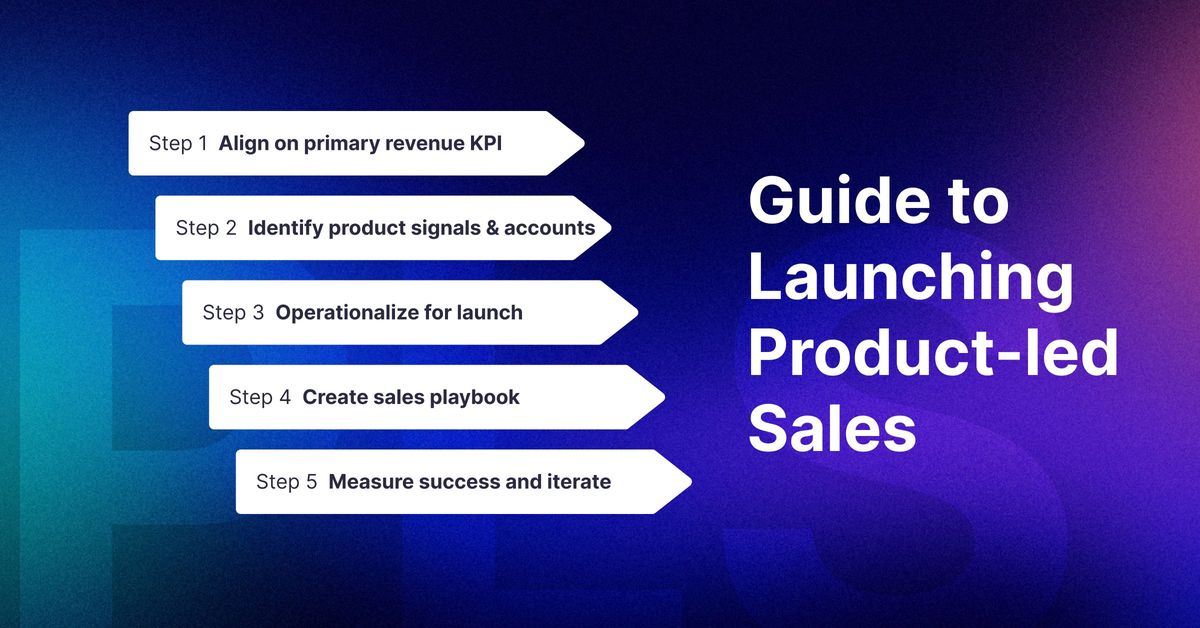
The sales world is changing rapidly. Old school sales tactics focused on aggressive outreach, persuasive pitching, and transactional buyer-seller relationships are fading. In their place, a new paradigm is emerging: product-led sales.
This groundbreaking approach puts the product front and center in the sales process. Instead of pushing prospects through a sales funnel, product-led sales lets the product sell itself by allowing users to experience its value firsthand. The results? Higher customer satisfaction, explosive organic growth, and sales teams that act as trusted advisors instead of pushy salespeople.
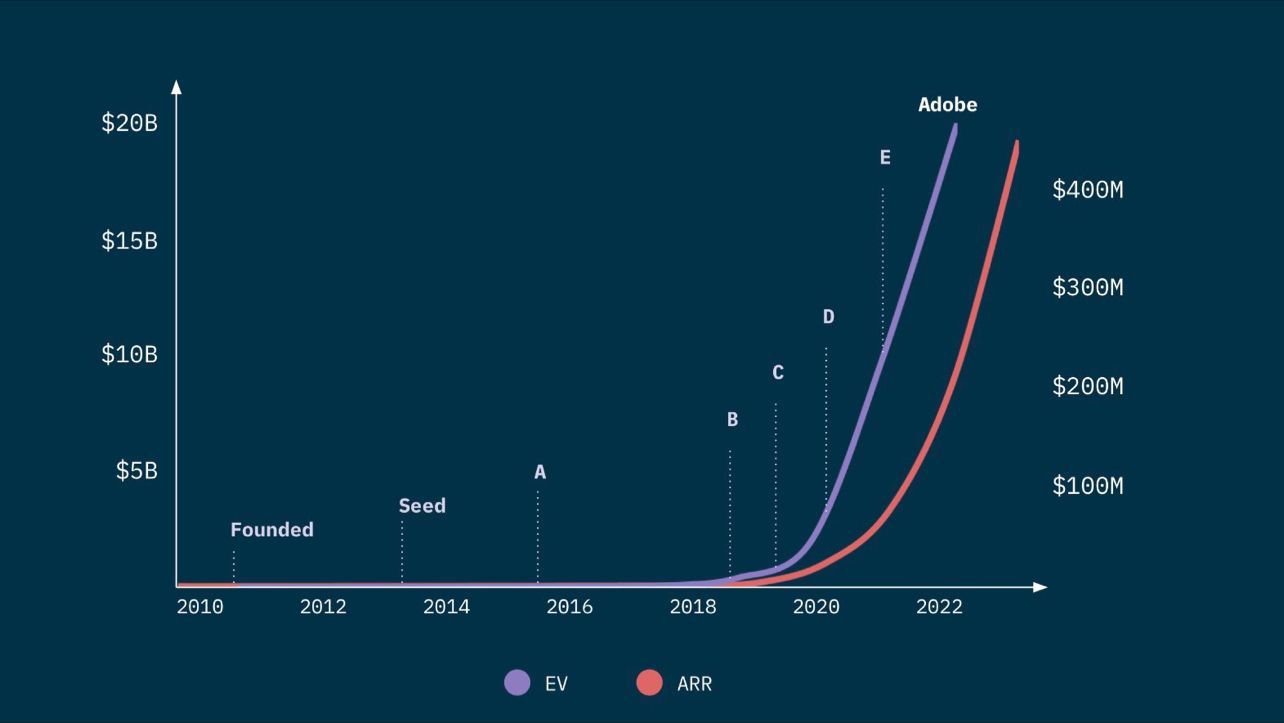
In this article, we’ll explore what product-led sales is, why it’s disrupting traditional sales models, and how organizations of all sizes can shift to this cutting-edge approach. You’ll learn key strategies like building cross-functional teams, tracking product usage signals, and optimizing the user experience to convert free users into happy, paying customers.
Intrigued? Read on to unlock the immense potential of product-led sales and learn how this strategy can transform your business's growth and customer relationships. The future of sales is here.
Key Takeaways
- Hybrid Approach
Product-Led Sales is a hybrid approach that leverages the strengths of PLG and SLG strategies to optimize user experience, organic growth, customer satisfaction and revenue. - Cross Functional
Implementing Product-Led Sales requires establishing a cross-functional team leveraging data & insights as well as cultivating a product-led culture for improved buyer experiences, increased sales efficiency & reduced CAC. - Quantitative Measures
Measuring success involves tracking KPIs such as LTV/TTV/PQLs while optimization comes from continuous improvement with customer feedback. Figma’s successful implementation resulted in industry leadership.
The Evolution of Product-Led Sales
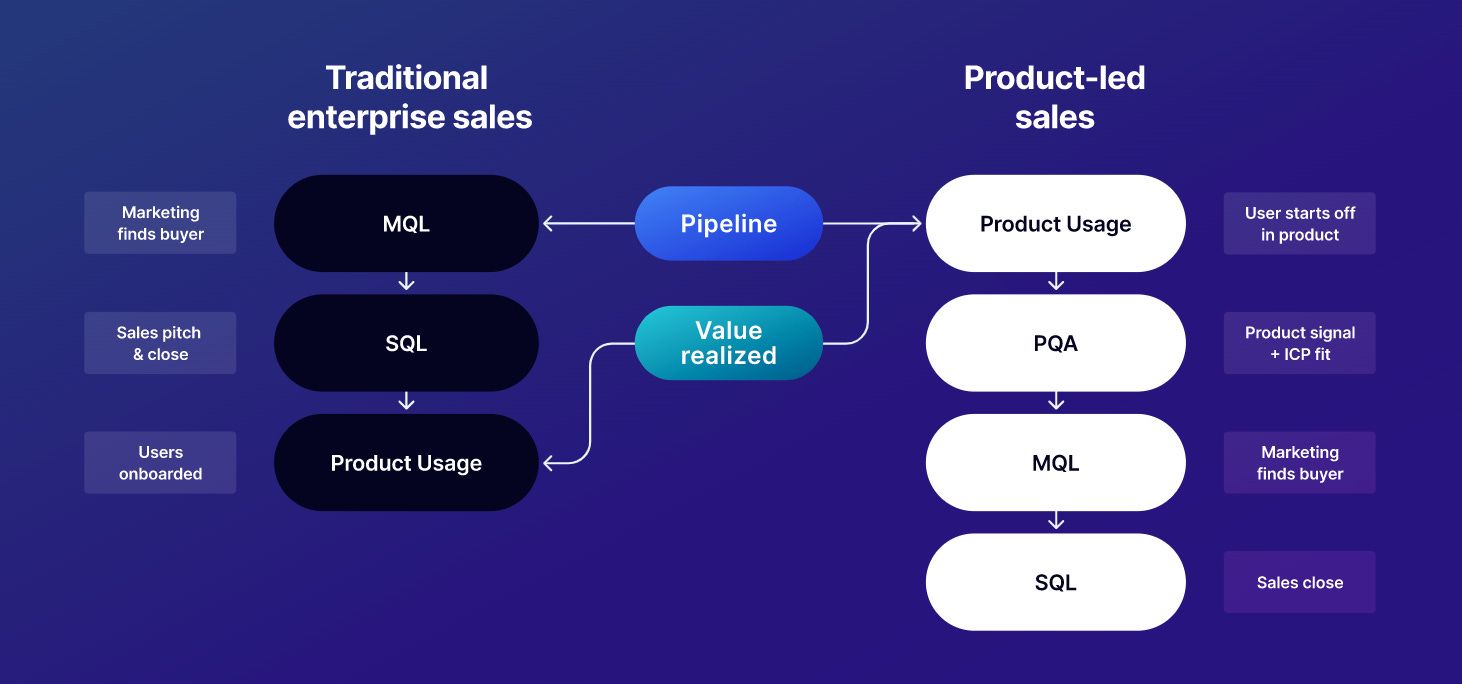
The sales landscape has undergone a significant transformation in recent years, with a shift towards user-centric sales strategies. This shift reflects an increased focus on the needs and preferences of the end-user, rather than solely targeting decision-makers.
As a result, organizations are adopting a product-led sales approach to stay relevant in the long run and adapt to changing market dynamics and customer behavior.
The Rise of User-Centric Sales
The focus of user-centric sales is to comprehend and cater to user needs, moving away from solely targeting decision-makers. This approach is increasingly being adopted by product-led companies to improve customer satisfaction and drive growth.
Traditional sales methods, on the other hand, prioritize building relationships with decision-makers who have financial authority to approve purchases, rather than focusing on the user who will be using the product. Once companies grasp and meet user needs, they can transform users into paying customers, offering a smooth and enjoyable experience.
Challenges with Traditional Sales Methods
Sales teams play a major role in traditional sales methods, which often lead to less than optimal customer experiences and elevated customer acquisition costs (CAC). These methods emphasize the role of the sales team in generating revenue, often requiring customers to speak with a sales representative to purchase or interact with the product.
The traditional sales cycle may not be the most effective approach for customer acquisition, and companies employing a sales-led go-to-market strategy risk losing market share to competitors with more efficient customer acquisition models.
Product-led GTM
Product-led businesses are focused on creating exceptional products that stand on their own merits. This approach prioritizes the customer experience, often by offering potential users the opportunity to try or use the product before making a purchase decision. By doing so, these businesses can achieve higher customer satisfaction, a better product-market fit, and more organic growth through word-of-mouth referrals and customer advocacy.
A product-led go-to-market (GTM) strategy is a plan that a company employs to deliver its products or services to customers. This strategy can significantly enhance the traditional buying process, which typically involves a series of steps from recognizing a need, evaluating alternatives, making a decision, and finally making a purchase.
In contrast to a sales-led strategy, where the sales team proactively reaches out to potential customers to present the value proposition and close deals, a product-led sales approach allows the product to sell itself. This shift in focus allows potential customers to experience the product's value firsthand.
The product-led model often incorporates a free trial or freemium model, allowing users to test the product before committing. The transition from these free users to paid customers signifies the users' recognition of the product's value and their decision to invest in the full version of the product or service.
Adopting a product-led sales strategy marks a departure from traditional sales tactics. Instead, it emphasizes delivering a superior product and customer experience, leading to increased efficiency, cost savings, and an enhanced customer experience.
Defining Product-Led Sales: A Hybrid Approach
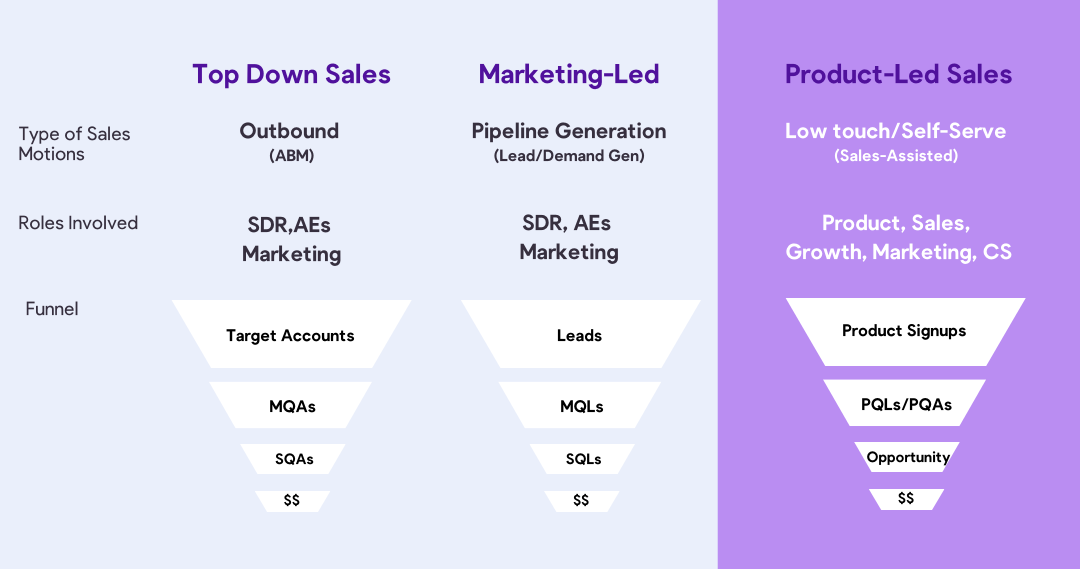
Product-Led Sales is a hybrid approach that combines the advantages of product-led growth (PLG) and sales-led growth (SLG) strategies, optimizing conversion and value throughout the customer journey. This product led approach focuses on delivering a seamless and valuable user experience, driving organic growth through word-of-mouth, and maximizing customer satisfaction and revenue in a product led business.
When products take the lead across all departments, they play a pivotal role in customer acquisition, growth, and retention.
Key Components of Product-Led Sales
The essential elements of Product-Led Sales include emphasising product usage data, concentrating on product-qualified leads (PQLs), and coordinating sales and product teams. PQLs are users who have demonstrated a high level of engagement and whose companies meet the criteria of an Ideal Customer Profile.
Maximizing PQL conversion serves as the best strategy to use sales personnel’s time effectively and stimulate revenue growth. PQLs demonstrate a significantly higher rate of conversion than marketing qualified leads (MQLs) that have not yet experienced the product.
Implementing Product-Led Sales in Your Organization
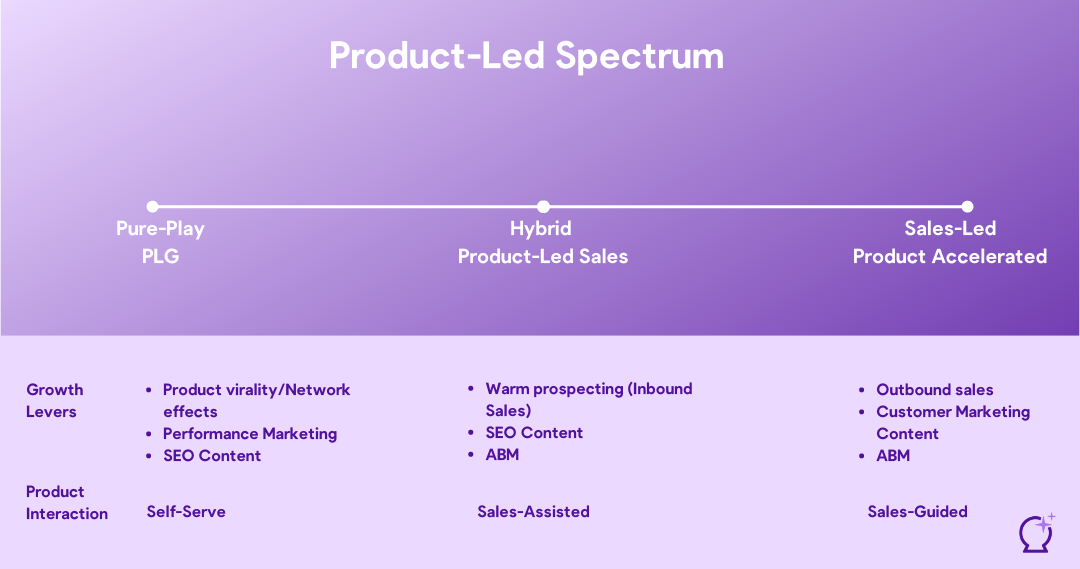
Successfully implementing Product-Led Sales in your organization requires a strategic approach, focusing on creating a cross-functional product led sales team, leveraging available data and insights, and cultivating a product-led culture. Avoiding common mistakes, such as launching an untested product, having a shallow understanding of signals or PQLs, and neglecting continuous training, is crucial for success.
The involvement of various teams in a product-led culture is significant, fostering a collaborative environment where all contributions are appreciated.
Establishing a Cross-Functional Team
Forming a cross-functional team guarantees cooperation between product, sales, marketing, and customer success teams, building a consistent customer experience. To implement this, follow these steps:
- Begin with a small-scale approach.
- Consult with experienced sales representatives.
- Form a team comprising of operations and data teams.
- Continually refine until positive outcomes are attained.
- Deploy the cross-functional team.
Feedback loops play a vital role in successfully implementing a product-led sales approach, promoting early and transparent communication between different functions.
Leveraging Data and Insights
Sales teams can prioritize accounts and tailor their outreach based on the data and insights obtained from product usage and customer behavior. Utilizing data and insights for product-led sales is of great importance, as it enables businesses to:
- Make judicious decisions
- Acquire a competitive edge
- Optimize operations
- Improve customer experiences
- Stimulate revenue growth
Advantages of Embracing Product-Led Sales
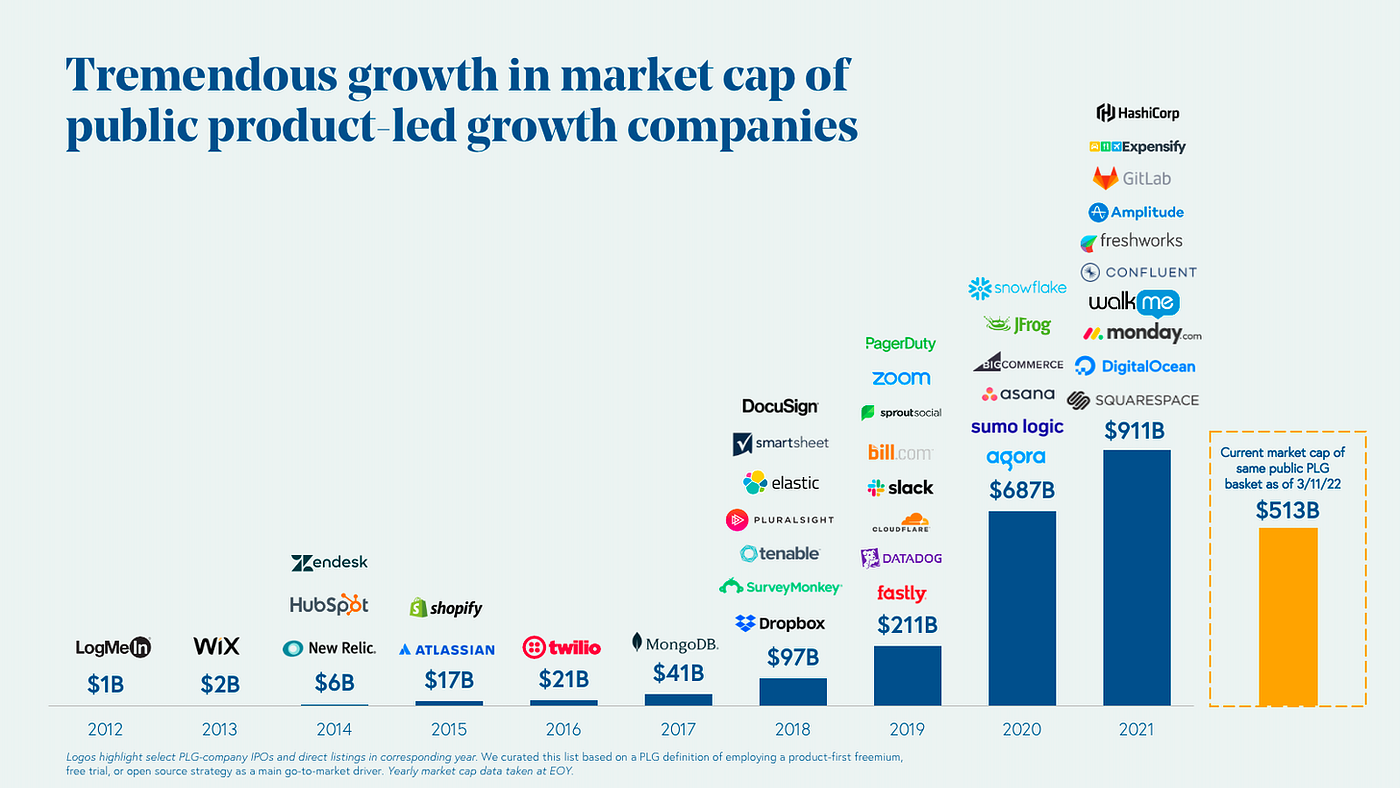
Adopting Product-Led Sales offers numerous advantages, such as improved buyer experience, increased sales efficiency, and reduced CAC.
Companies can develop a more streamlined and intuitive sales process that maximizes value for both free users and paying customers by catering to customer needs and aligning with their buying preferences.
Enhanced Buyer Experience
Focusing on meeting customer needs and aligning with their buying preferences results in a more efficient and intuitive sales process. Sales reps in Product-Led Sales are responsible for:
- Approaching self-qualified users and assisting them in unlocking the maximum value from the product as a skilled sales rep
- Guiding users through the product adoption journey
- Providing demos, use cases, and product education
- Resolving specific problems
They must be knowledgeable about the product and its features, as well as the customer’s needs.
Driving Sales Efficiency and Lowering CAC
By enabling sales reps to focus only on accounts and users with high propensity to buy, Product-Led Sales reduces costs and increases deal velocity. This approach minimizes the cost of customer acquisition by allowing buyers to independently familiarize themselves with the product, reducing the need for sales teams to invest time and resources on leads that are not yet ready to buy.
Product-Led Sales is a cost-effective and efficient way to acquire customers. It allows it to allow it to be used with ease.
The Product-Led Sales Process
Product-led sales (PLS) is a strategic shift that has become a key growth driver for many SaaS businesses. Unlike traditional sales-led approaches, PLS places the product at the center of the sales process. Prospective customers are offered free trials, allowing them to experience the product's value firsthand before transitioning to paid customers.
Product usage insights or signals are the fuel that drives the PLS strategy. These signals provide the product and sales teams with invaluable information about how potential customers interact with the product during their trial period. These insights are critical for customizing the sales process, optimizing the product, and driving revenue growth.
A cornerstone of PLS is the seamless customer experience. The marketing team collaborates closely with the product and sales teams to develop resources that help users extract maximum value from the product during their trial. While PLS is effective for individual users or small teams, it can also be a powerful strategy for acquiring enterprise customers by showcasing the product's value on a larger scale.
The sales funnel in PLS is unique. The top of the funnel is populated with users trying the product for free, and the sales team's focus is on converting these users into paid customers based on their product usage signals. This transition to a product-led sales approach can result in increased efficiency, cost savings, and an enhanced customer experience, ultimately driving revenue growth for businesses.
Measuring Success in Product-Led Sales
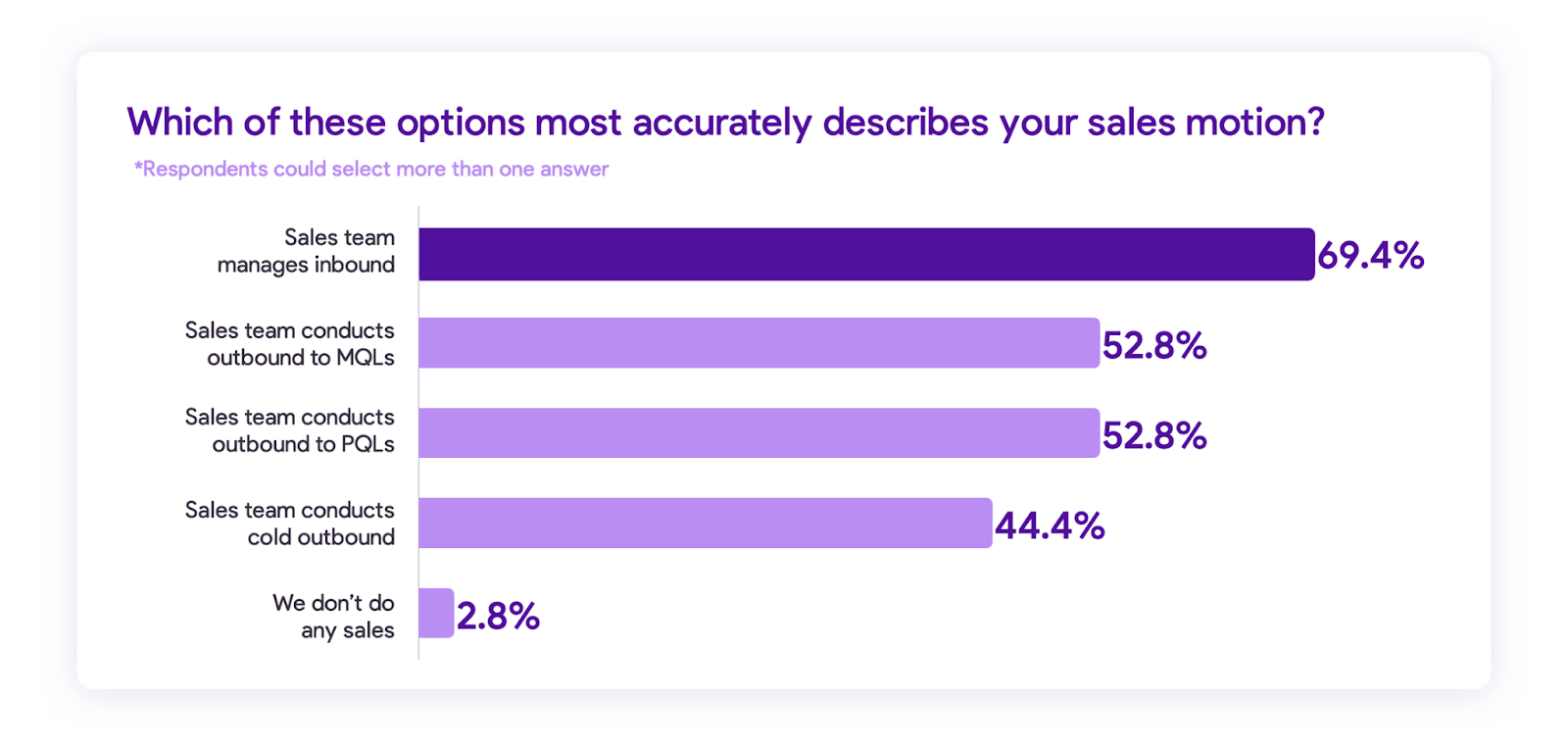
Tracking key performance indicators (KPIs) and continuously improving and optimizing the sales process is crucial for the success of Product-Led Sales. Monitoring relevant KPIs allows organizations to assess the effectiveness of their product-led sales approach and identify areas for improvement.
Additionally, customer feedback should be taken into account to adjust the product-led sales strategy accordingly.
Key Performance Indicators (KPIs)
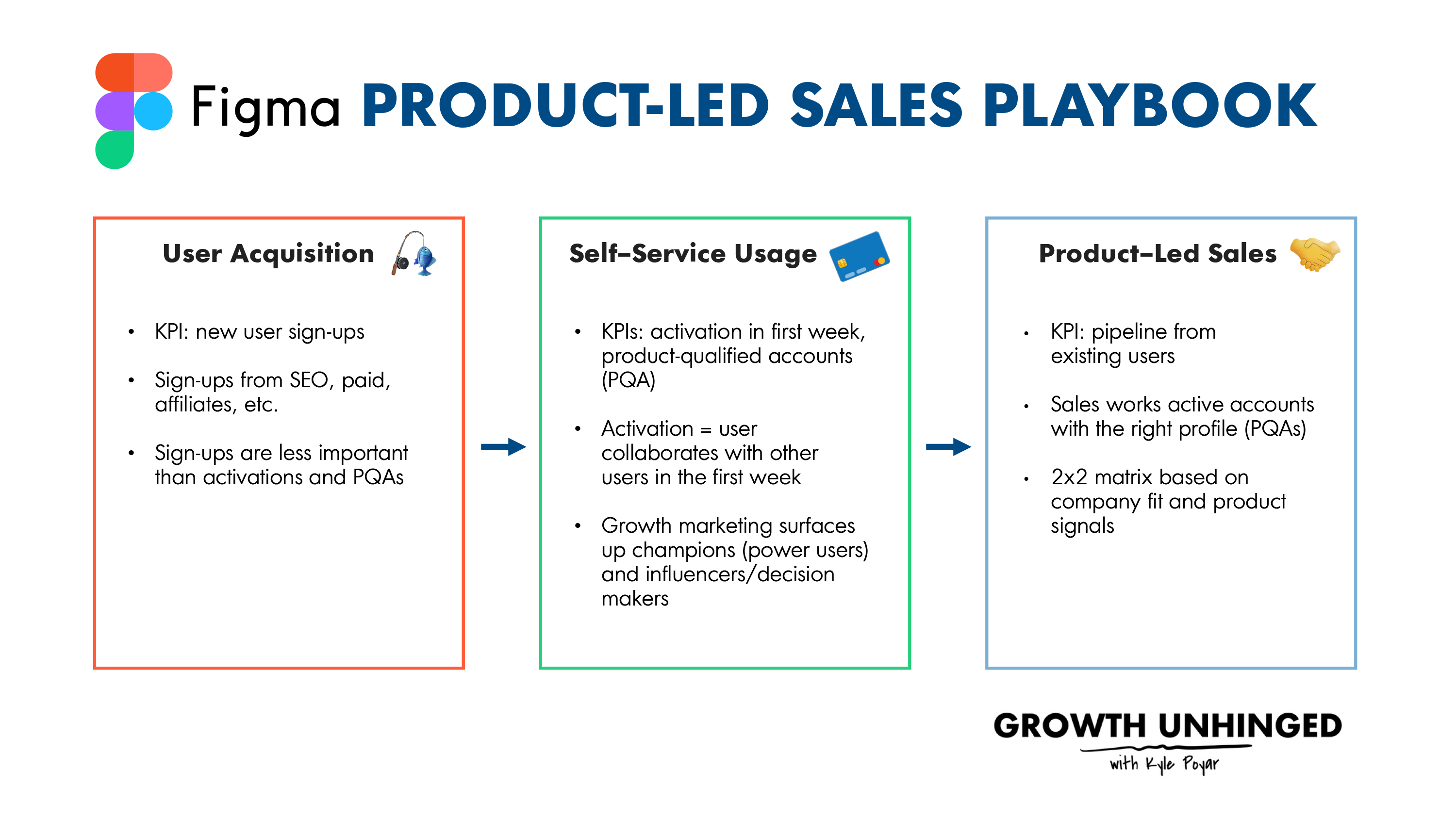
KPIs for Product-Led Sales include metrics like LTV, sign-up volume, and product engagement.
Other important KPIs for evaluating success in product-led sales include Time-to-Value (TTV), Product-Qualified Leads (PQLs), Expansion Revenue, Feature Adoption Rate, and User Retention Rate.
Continuous Improvement and Optimization
The process of continuous improvement and optimization includes trying out various strategies, learning from failures, and using feedback to refine the sales process.
Conducting experiments, gathering customer data and feedback, and making iterative changes to the product and sales process are essential steps for the successful implementation of Product-Led Sales.
Cross-Functional Team Collaboration in Product-Led Sales
A successful product-led sales strategy requires tight collaboration between cross-functional teams across the organization. Each team plays a crucial role in delivering an exceptional product experience and guiding users from trial to loyal customer.
Product Teams
The product team is at the core of a product-led strategy. Their role is to build a remarkable product that sells itself and delights users at every touchpoint. To do this, they must obsess over understanding user needs, rapid iteration, and continuous improvement.
Account Managers
Account managers act as trusted advisors, ensuring users fully realize the product's value during trials and facilitating expansion after conversion to paid plans. Their product expertise allows them to proactively engage users based on usage signals and help troubleshoot issues.
Customer Experience
This team manages the end-to-end user journey, maintaining seamless transitions across marketing, sales, and support. Feedback loops with other teams help CX identify friction points in onboarding, adoption, and retention.
Marketing
Marketing and product collaborate closely on positioning the product in the market. Marketing creates messaging aligned with product capabilities and develops resources to aid self-serve user evaluation.
Product-led Sales Team
Product-led sales teams, on the other hand, focus on guiding users who have already shown interest in the product through the sales process. They work to remove barriers to purchase and assist users in understanding the full value of the product.
Product-led Sales Funnel
This emerging team focuses on converting strong product usage signals into sales. They use data insights to identify prime upsell opportunities among trial users and provide tailored pricing and expansion guidance.
The sales funnel takes on a different shape in a product-led sales strategy. Instead of a traditional funnel with inbound leads at the top, the product-led funnel is populated with free trial users at the start. The goal is to convert these trial users into happy, paying customers based on their direct experience of the product's value.
In a product-led model, the traditional sales funnel is reimagined. The decision maker is often the user who experiences the product directly. The perceived value of the product becomes the primary driver for conversion, rather than persuasive sales tactics. This approach can lead to a more qualified and engaged user base, as the users who choose to purchase have already experienced the value of the product.
By working together across the entire funnel, these teams can optimize trial conversions and expansion revenue. The product itself takes the lead in demonstrating its value, while teams collaborate to provide supporting resources tailored to user signals and needs. Adopting a product-led sales strategy requires a shift in focus from traditional sales tactics to delivering a superior product and customer experience. This approach can lead to more engaged users, a more efficient sales process, and ultimately, a more successful SaaS business.
Real-Life Examples of Product-Led Sales Success

Companies that have effectively implemented Product-Led Sales have experienced significant growth and improvements in customer experiences. For instance, Figma has successfully utilized continuous improvement and optimization to foster organic growth and bolster customer satisfaction.
Figma's Approach to Product-Led Sales
Figma, a leading visual collaboration software provider, has made significant strides in employing a product-led sales strategy. The company has grown its annual recurring revenue by 100% year-on-year, from $200 million to $400 million, largely due to its product-led sales approach.
Jesus Requena, who led the Growth Marketing team at Figma, describes product-led sales as a motion that starts with users finding value in the product, followed by sales reaching out to the right accounts to educate them about a better product tier.
Figma's growth marketing focuses on new user acquisition and pipeline generation for sales. Around 70% of their efforts are dedicated to driving traffic and new sign-ups with the right profiles, as this fuels sales along the way. The team ensures that their efforts on SEO, paid, affiliates, and others bring users that activate, with activation being their North Star metric.
In terms of pipeline generation, 95% of the pipeline comes from the existing user base. The growth marketing team supports the sales team by optimizing product signals and enabling them with the right messaging for each signal. They target decision-makers in these accounts with content around the value of Figma when scaling design and product teams, bringing in new contacts in the form of marketing-qualified leads.
The company focuses on product-qualified accounts (PQAs) for sales assistance. They split accounts into high/low fit and high/low product signal or intent, allowing sales reps to prioritize based on best fit and highest signals.
Figma has also equipped its sales team with account data to understand which accounts are more likely to need their organization or enterprise products. They created a model that surfaced around 10 data points, which, when two or more are triggered, indicate a high likelihood for the account to upgrade. This data is displayed at the account level and user-within-account level using a software called Endgame.io.
Figma's approach to product-led sales has resulted in more depth into the narratives and messaging for mature reps, more visibility into what exactly the account is doing, and a solid starting point for new reps into product-led opportunities. It has also fostered a bond between growth marketing and sales over how to segment existing accounts and which ones to focus on.
They’ve amplified their revenue and solidified their industry leadership by refining their product and sales process based on customer feedback.
Top Product-led Sales Tools

Product-led sales relies on having the right tools and software to support the self-serve model and streamline the transition from free user to paying customer. The key is choosing solutions that provide visibility into product usage, customer behavior, and sales metrics to optimize the customer journey.
Some of the top tools for enabling product-led sales include:
- Userpilot: A powerful product adoption platform that enables you to quickly build user onboarding experiences and improve feature adoption.
- Mixpanel: A product analytics tool that helps you track user behavior, measure engagement, and optimize your product for growth.
- Tableau: A data visualization tool that allows you to create interactive and shareable dashboards to track product metrics and make data-driven decisions.
- Attio: A new, popular CRM platform that can be used to manage customer relationships, track sales activities, and generate insights for product-led sales.
- HubSpot Sales Hub: A sales enablement platform that offers tools for email tracking, meeting scheduling, and pipeline management, among other features.
- Hotjar: A user behavior analytics tool that provides heatmaps, recordings, feedback, and surveys to help you understand user behavior and optimize your product experience.
- Pocus: A sales enablement solution for product-led companies that identifies top opportunities and surfaces insights to help sales reps convert self-serve users to paid customers.
Summary
The future of sales is here. Product-Led Sales represents a monumental shift - one that is redefining how companies bring value to customers and drive revenue in the digital age. By embracing user-centricity, leveraging product usage data, and coordinating sales and product teams, organizations can unlock massive efficiency gains, reduce customer acquisition costs, and boost organic growth.
Now is the time to get on board with this game-changing approach. Take the first step by assembling a cross-functional PLG team. Empower them to optimize the user experience while mapping the customer journey. Let your product evangelize itself and watch satisfied users transform into loyal brand advocates.
The world of sales is being reimagined before our eyes. Companies that cling to traditional methods risk extinction.
But organizations that have the vision to adopt Product-Led Sales can look forward to unprecedented growth, profitability, and market leadership.
The future starts today. Will you lead it?
Frequently Asked Questions
What are product-led sales?
Product-Led Sales is a customer-centric approach which prioritizes prospects based on product usage data and nurtures them to close deals. These are referred to as Product Qualified Leads (PQLs).
PQLs are a great way to identify and target potential customers who are already using the product and are likely to convert. By focusing on these customers, companies can increase their sales efficiency and close more deals.
What is product-led vs sales-led?
Product-led growth emphasizes a self-service model for customers to experience and learn the product, while sales-led companies rely on 1-on-1 assistance to guide leads through the sales journey.
What does product-led growth mean for sales?
Product-led growth encourages customers to discover, purchase and expand their usage of a product on their own, with minimal involvement from sales.
This means that sales teams will have less of a role in the traditional sense of guiding customers through the funnel to a successful purchase.
How does a cross-functional team contribute to the success of Product-Led Sales?
Cross-functional teams enable collaboration between departments, enhancing customer experience and driving successful product-led sales.
What are some key performance indicators (KPIs) for measuring success in Product-Led Sales?
Key performance indicators for measuring success in Product-Led Sales include Lifetime Value (LTV), sign-up volume, product engagement, Time-to-Value (TTV), and Product-Qualified Leads (PQLs).
- Product-Qualified Leads (PQLs): These are users who demonstrate high product usage, fit your ideal customer profile, and show potential for conversion, upsell, cross-sell, or expansion.
- Time-to-Value (TTV): This metric measures the time it takes for users to achieve their desired outcome or realize the value of your product.
- Feature Adoption Rate: This KPI tracks the percentage of users who adopt and use specific features in your product.
- Expansion Revenue: This metric measures the additional revenue generated from existing customers through upsells, cross-sells, and add-ons.
- Retention Rate: This KPI measures the percentage of users who continue to use your product over a specific period of time.
- Sales Cycle Length of Sales-Assisted Conversions: This metric measures the average time elapsed between initial sales outreach and the final sale, which can help evaluate the synergy between product and sales teams.
- Net Revenue Retention: This KPI measures the revenue retained from existing customers, accounting for upgrades, downgrades, and churn.
- Net Promoter Score (NPS): This metric gauges customer satisfaction and loyalty by measuring how likely users are to recommend your product to others.
These KPIs can help you track the success of your Product-Led Sales strategy and identify areas for improvement. Remember to tailor the metrics to your specific business model and goals for a more accurate assessment of your performance.
